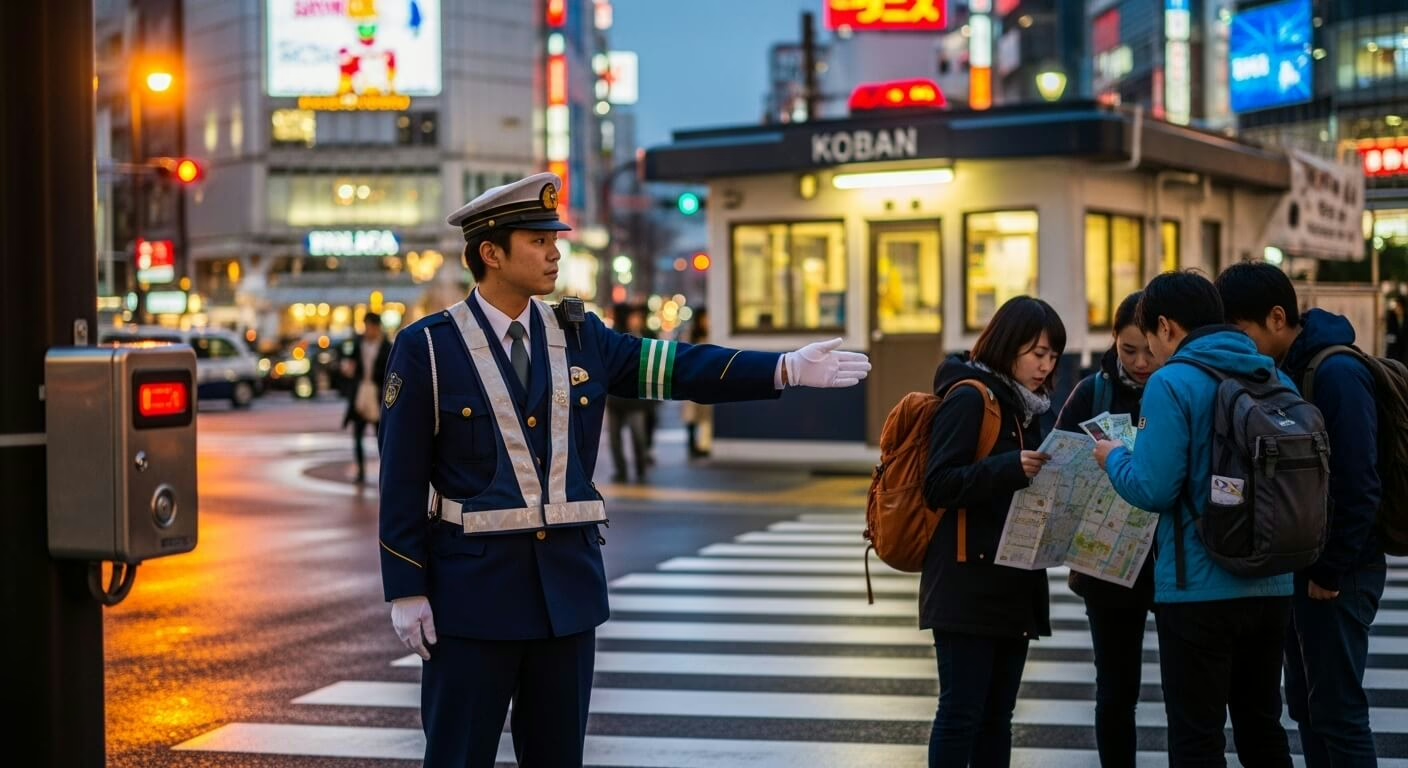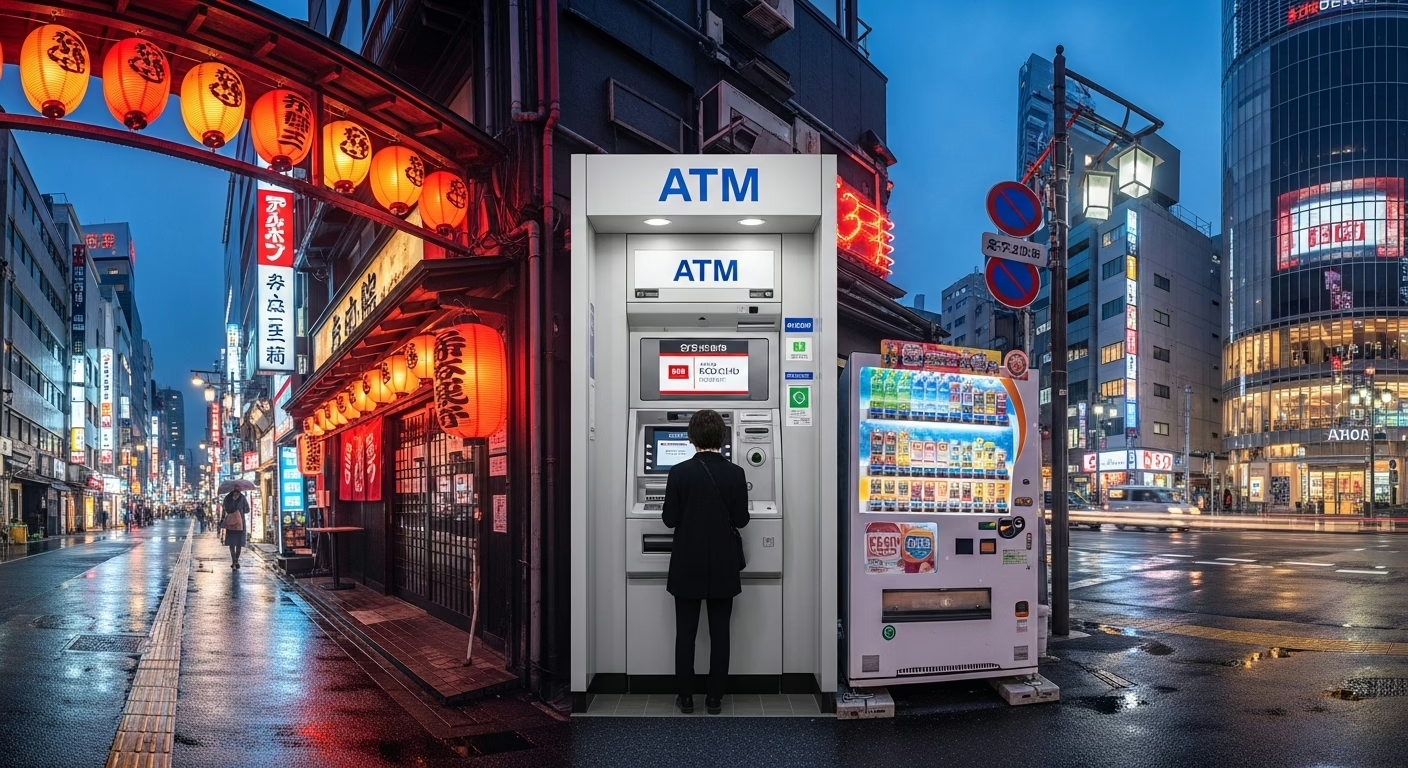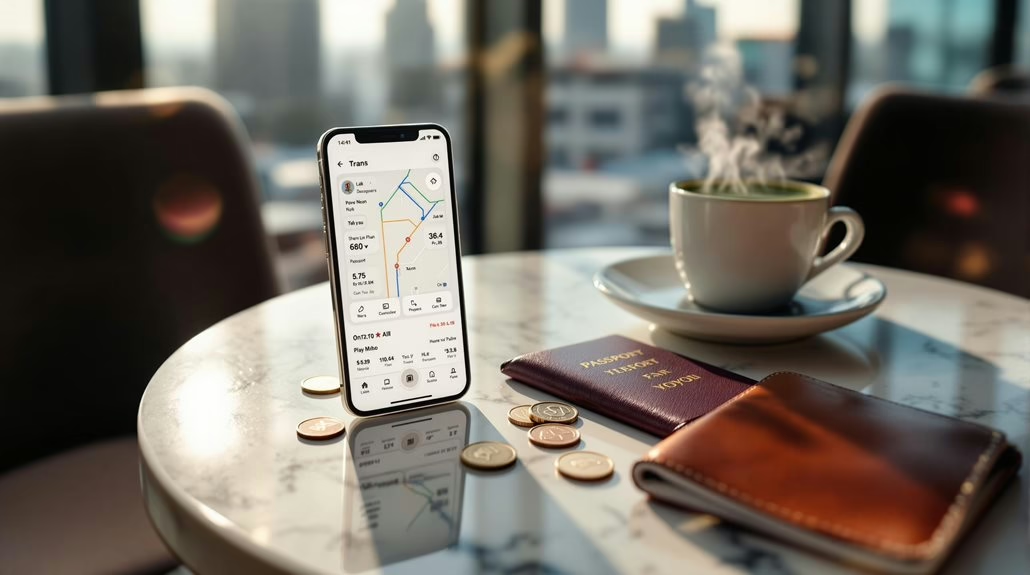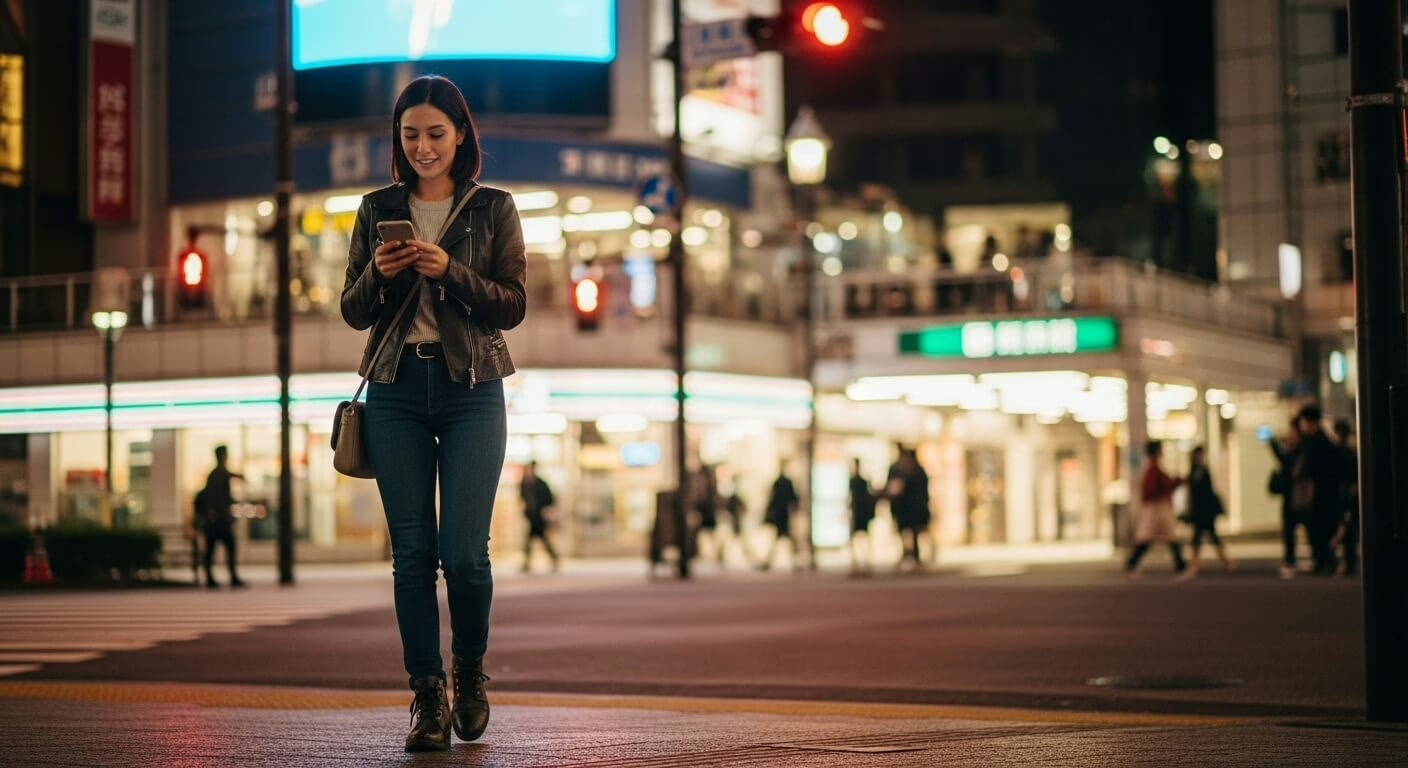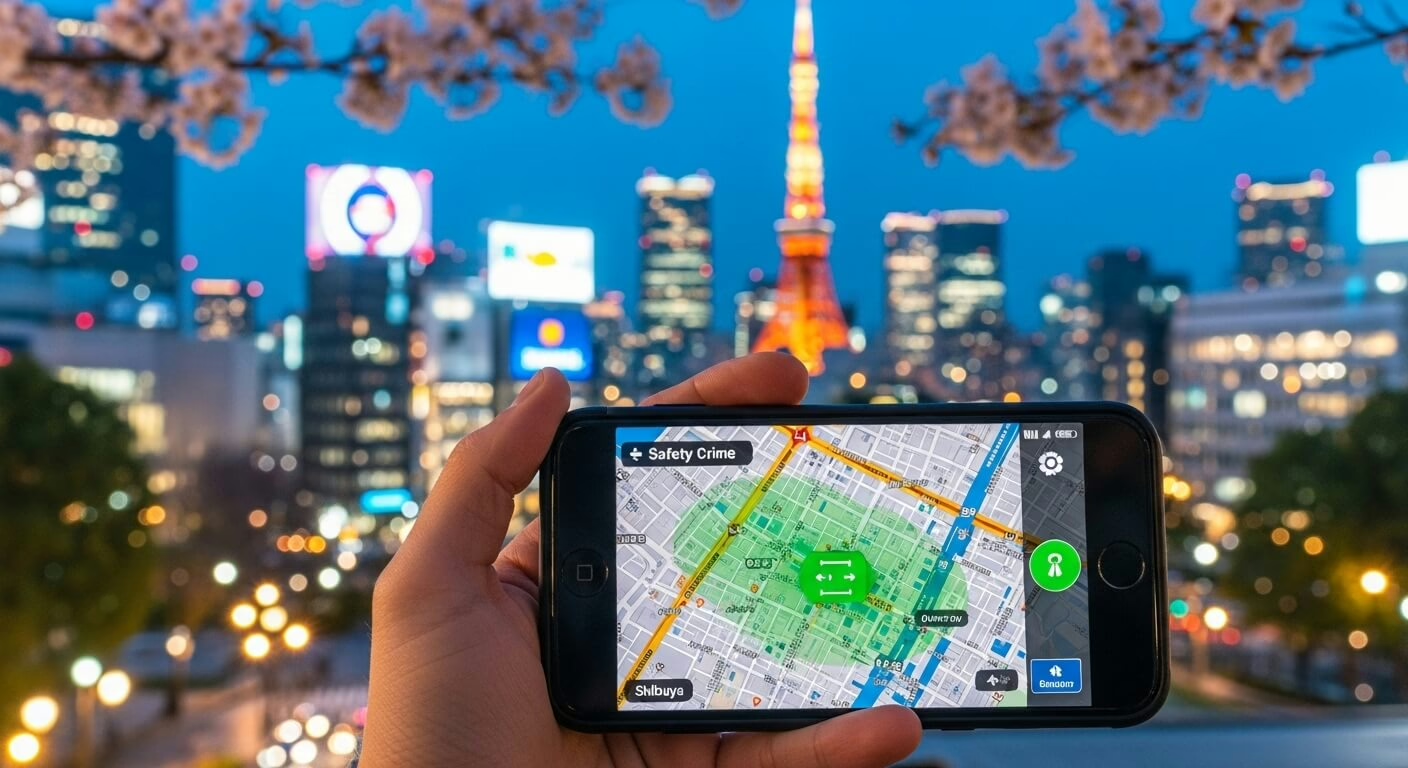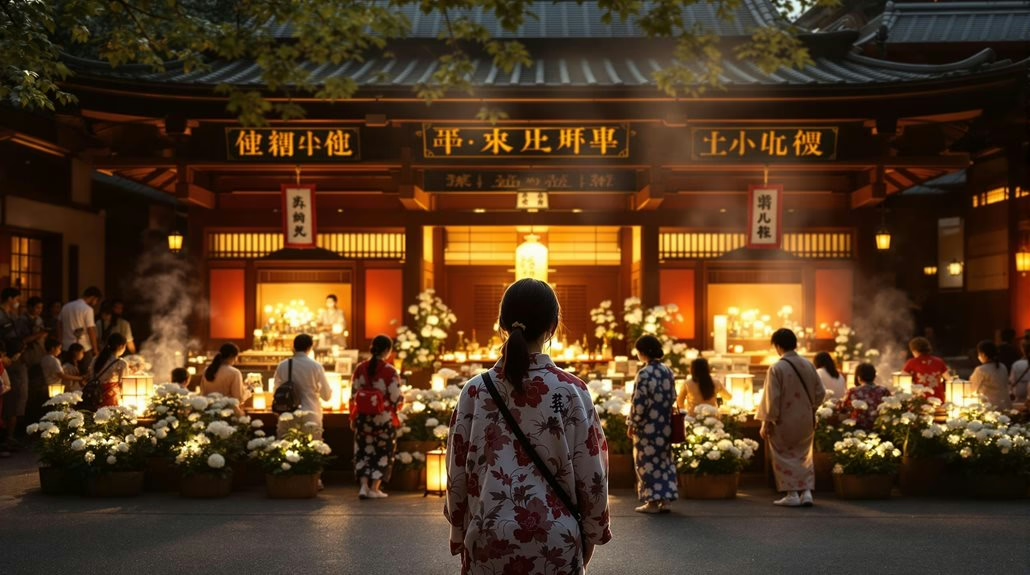Tokyo Safety Guide: Crime Statistics & Precautions for Tourists
How Safe Is Tokyo Really? Facts, Stats, and Essential Precautions – Tokyo ranks among the world’s safest major cities, with violent crime rates roughly 20 times lower than London and theft far less common than Paris or Barcelona.
The city’s strict gun laws, extensive security cameras, and courteous culture create an exceptionally secure environment where even “dangerous” neighborhoods remain safe by international standards.
Standard precautions still apply—secure valuables, stay alert in crowded trains, avoid pushy touts in entertainment districts like Kabukicho, and keep emergency numbers handy (110 for police, 119 for ambulance).
The statistics paint an impressive picture, but smart travelers understand the nuances that make Tokyo both welcoming and wonderfully secure.
Key Takeaways
Hide- Tokyo ranks among the world's safest major cities with exceptionally low violent crime and murder rates around 0.3 per 100,000 residents.
- Petty theft is rare but tourists should secure valuables, use hotel safes, and remain alert in crowded areas and on public transport.
- Entertainment districts like Kabukicho and Roppongi are generally safe but watch for overpriced bars, pushy touts, and inflated bills at night.
- Emergency contacts include 110 for police, 119 for fire/ambulance, and English support via Japan Visitor Hotline at 050-3816-2787.
- Download offline maps and translation apps, carry hotel cards, and respect local customs including photography permission and social boundaries.
Is Tokyo Safe? Real Crime Stats and Safety Tips Every Tourist Needs
Tokyo consistently ranks as one of the safest major cities on the planet, and the statistics back up what millions of visitors discover firsthand each year.
Tokyo Trip Add-Ons
Equip yourself for the ultimate Tokyo adventure with the following add-ons, curated just for you.
With crime rates dramatically lower than most Western capitals, travelers can explore night markets, sample local cuisine at hole-in-the-wall ramen shops, and wander through lively cultural festivals without constantly watching their backs.
Petty theft remains rare, violent crime even rarer!
The city’s legendary politeness isn’t just cultural window dressing—it creates genuine security that lets adventurous souls roam freely.
That said, smart travelers stay alert in crowded areas like Shibuya Crossing, keep valuables secure during packed train commutes, and avoid sketchy entertainment districts late at night.
- Tokyo Onsen Etiquette: Hot Spring Rules & Cultural Significance
- Tokyo Rainy Day Fashion: What Locals Wear & Where to Buy Rain Gear Like a Pro
- Tokyo Luggage Storage Guide for Travelers
- When to Visit Ueno Park for Cherry Blossoms: A Complete Guide
- Tokyo Typhoon Season: Safety Tips & Indoor Backup Plans
- Tokyo Travel Insurance: What to Cover & Recommended Providers
Common sense wins every time.
Tokyo’s Real Safety Picture: What the Numbers Actually Tell Us
Tokyo’s sterling safety reputation isn’t just hype—it’s backed by hard data from the Japan National Police Agency that consistently places the city among the world’s safest major metropolises.
When you stack Tokyo’s crime rates against New York, London, or Paris, the difference is genuinely staggering, with violent crime rates that often clock in at a fraction of what you’d find in comparable Western cities.
Even the petty stuff that tourists worry about—pickpocketing in Shibuya, bag snatching in Shinjuku—happens so rarely that locals genuinely look surprised when visitors mention these concerns.
Crime Statistics You Can Trust: Japan’s National Police Agency Data
The numbers don’t lie, and when it comes to Tokyo’s safety record, they tell a story that might seem almost too good to be true—except it absolutely is.
Japan’s National Police Agency publishes extensive crime data with remarkable police transparency, giving travelers concrete evidence of what locals already know.
The statistics reveal local crime trends that consistently rank Tokyo among the world’s safest megacities, with violent crime rates that make other capitals blush.
Petty theft remains rare, assault even rarer, and visitors can actually track monthly updates showing how exceptionally safe their destination truly is.
This isn’t propaganda or tourist-board marketing—it’s verifiable data you can cross-reference yourself, numbers that demonstrate why millions of solo travelers, including women wandering midnight streets, feel genuinely secure here.
How Tokyo Compares to Other Global Cities
Numbers become meaningful when placed side-by-side, and comparing Tokyo’s crime statistics against other major cities transforms abstract data into jaw-dropping revelations.
Tokyo’s murder rate hovers around 0.3 per 100,000 residents—remarkably, that’s roughly one-twentieth of London’s rate and a staggering forty times lower than certain American metropolises.
Violent crime remains exceptionally rare, even in bustling entertainment districts where language barriers might otherwise create vulnerability.
Theft occurs far less frequently than in Paris, Barcelona, or Rome, where pickpocketing has become almost expected.
Understanding local customs amplifies your safety advantage—bowing instead of handshaking, removing shoes indoors, and respecting queue etiquette signal cultural awareness that fosters goodwill.
Tokyo’s infrastructure, from brilliantly lit streets to omnipresent security cameras, creates an environment where solo travelers genuinely walk midnight routes without apprehension.
The Truth About Petty Crime in Tourist Areas
Where exactly does petty crime lurk in this famously safe metropolis, and should travelers actually worry about their belongings?
Tourist safety misconceptions paint Tokyo’s bustling districts as pickpocket havens, but the reality defies expectations.
Shibuya crossing, Shinjuku’s neon-drenched alleyways, and Asakusa’s temple grounds see millions of visitors annually, yet wallet thefts remain exceptionally rare.
The petty crime myths surrounding crowded trains and tourist hotspots crumble under scrutiny—police statistics reveal far lower incidents than comparable international destinations.
That said, complacency isn’t wisdom.
Opportunistic crimes do occur, particularly targeting distracted travelers photographing cherry blossoms or exploring izakayas after midnight.
Keep valuables secure, maintain awareness in packed stations, and you’ll likely find Tokyo’s legendary safety reputation entirely justified through personal experience.
Smart Precautions That Actually Matter
While Tokyo ranks as one of the world’s safest megacities, a few smart habits will keep your trip running smoothly and stress-free.
The key is knowing where minor risks actually exist—crowded train stations during rush hour, busy nightlife zones in Roppongi and Kabukicho, and tourist-heavy spots where opportunistic scams occasionally pop up.
Let’s break down the practical precautions that matter, so you can explore with confidence instead of paranoia!
Protecting Your Belongings in Crowded Places
Tokyo’s crowded spaces—packed train platforms during morning rush hour, the scramble crossing at Shibuya, the neon-lit chaos of Shinjuku at midnight—create prime opportunities for the rare pickpocket or accidental item loss.
Smart travelers keep their bags zipped and positioned in front of their bodies when traversing the human rivers flowing through Harajuku’s Takeshita Street or squeezing into packed train cars at Shinjuku Station during the 8 AM commuter crush.
While Tokyo remains remarkably safe compared to most global cities, a few practical habits (cross-body bags, front pocket wallets, awareness of your surroundings) ensure your belongings stay exactly where they belong!
Train Station Safety: Rush Hour and Late-Night Travel
How can travelers navigate Tokyo’s packed train stations without falling victim to pickpockets or losing their belongings in the chaos?
During train station congestion, keep bags zipped and positioned front-facing—thieves exploit distracted commuters.
Rush hour (7-9 AM, 5-8 PM) demands extra vigilance with valuables.
Late night security remains excellent, though women-only cars offer additional comfort.
Stay alert, trust your instincts, and you’ll breeze through Tokyo’s stations confidently!
Shopping District Awareness: Shibuya, Shinjuku, and Harajuku
The electric buzz of Shibuya Crossing, the neon-lit corridors of Shinjuku, and Harajuku’s kaleidoscope of street fashion create Tokyo’s most exhilarating shopping districts.
And also, their densest crowds where a moment’s distraction can separate travelers from their wallets.
Shopping safety demands front-facing crossbody bags during boutique shopping sprees, not backpacks that pickpockets can unzip unnoticed.
Keep phones secured in zippered pockets—not dangling temptingly in your hand while you’re mesmerized by storefront displays!
Scams Tourists Should Know About
Tokyo ranks as one of the world’s safest cities, but savvy travelers still need to recognize a handful of targeted scams that specifically exploit tourists unfamiliar with local customs and payment systems.
The most common schemes involve overcharging at certain entertainment districts, suspicious “helpful strangers” who lead visitors to expensive establishments, and credit card skimming at compromised ATMs or questionable businesses.
Understanding these tactics—plus knowing how to safely handle money in Japan’s cash-heavy culture—means travelers can explore with confidence instead of constant worry!
Common Tourist Scams and How to Spot Them
While Japan’s capital consistently ranks among the world’s safest major cities, travelers should still remain aware of a handful of opportunistic schemes that occasionally target foreign visitors.
Tourist scams here remain notably rare compared to other global destinations, but sharpening your scam detection skills ensures complete peace of mind.
Watch for overpriced “exclusive” bars in Roppongi, fake monks requesting donations, and unlicensed taxis—simple awareness keeps your adventure smooth!
ATM Safety and Credit Card Usage
How does cash-heavy Japan affect a traveler’s banking needs?
You’ll need yen regularly, but ATM security remains excellent at 7-Eleven and post offices—skip sketchy standalone machines.
Credit card fraud stays incredibly rare here, though acceptance isn’t universal outside major chains.
Use shoulder-shielding when entering PINs, keep cards visible during transactions, and always choose yen over dollar conversion to avoid predatory exchange rates!
After-Dark Safety in Entertainment Districts
Tokyo’s entertainment districts pulse with neon energy well past midnight, and while they’re generally safe, a few neighborhoods require extra street smarts after the sun goes down.
Kabukicho in Shinjuku and Roppongi stand out as areas where tourists should stay alert—not because they’re dangerous, but because they attract touts, overpriced bars with surprise bills, and the occasional pushy promoter who won’t take no for an answer.
Knowing which warning signs to watch for and how to get home safely (whether you’re racing for the last train or splurging on a taxi) makes all the difference between a fun night out and an expensive headache.
Kabukicho and Roppongi: What to Watch For
Japan’s two most famous nightlife districts—Kabukicho in Shinjuku and Roppongi in Minato—buzz with neon-lit energy and genuine excitement.
But they also attract the kind of hustle that requires visitors to keep their wits about them.
Watch for touts aggressively promoting bars with inflated bills, stick to established venues, and never follow strangers promising “special experiences.” Your nightlife safety depends on trusting your instincts in these entertainment districts.
Getting Home Safely: Taxis vs. Last Trains
When does Tokyo’s legendary train system actually stop running, and what happens when visitors misjudge that crucial timing?
Most lines shut down between midnight and 1 AM, leaving night owls stranded.
Understanding night safety means knowing taxi alternatives beforehand—ride-sharing apps, hotel shuttles, or even staying out until first trains at 5 AM.
Plan your exit strategy before the party starts!
Emergency Preparedness for International Visitors
Even the savviest travelers need to know what to do when things go sideways, and Tokyo’s emergency system—while incredibly efficient—comes with its own quirks that international visitors should understand before they need help.
The city offers multiple lifelines for tourists, from the standard 110 (police) and 119 (fire/ambulance) numbers to dedicated English-language support services that can bridge the communication gap when every second counts.
Knowing these resources ahead of time, including which hospitals have English-speaking staff and how to access 24-hour tourist assistance, transforms a potential crisis into a manageable situation.
Knowing Who to Call: Police, Medical, and Tourist Helplines
Tokyo ranks among the world’s safest megacities, but every savvy traveler needs a quick-reference list of emergency contacts tucked away—because let’s face it, no one wants to fumble through Google Translate when seconds count.
Dial 110 for police and 119 for fire or ambulance services; operators increasingly handle language barriers through multilingual support systems.
The Japan Visitor Hotline (050-3816-2787) operates 24/7 in English, Chinese, Korean, and Japanese, solving everything from cultural misunderstandings to genuine emergencies.
For medical guidance specifically, the Tokyo Metropolitan Health and Medical Information Center (03-5285-8181) connects travelers with English-speaking doctors and hospitals.
Save these numbers immediately—your future self, potentially standing confused on a Shibuya street corner at 2 AM, will thank you profusely!
Language Barriers During Emergencies
Language barriers transform routine emergencies into bewildering nightmares faster than a bullet train departing Shinjuku Station—which is precisely why international visitors need concrete preparation strategies before crisis strikes.
Download Google Translate’s offline Japanese pack immediately, because cellular networks fail when you need them most.
Screenshot essential phrases like “I need help” (tasukete kudasai) and medical condition descriptions in Japanese.
Many Tokyo hospitals employ English-speaking staff, but paramedics rarely do—emergency communication becomes infinitely smoother when you’ve pre-loaded critical information.
Carry your hotel’s business card always; cab drivers and first responders navigate by address, not landmark descriptions.
The Japan National Tourism Organization’s multilingual emergency hotline (050-3816-2787) connects travelers with interpreters covering nineteen languages, transforming panic into actionable solutions during those vital first moments when language barriers threaten your safety and freedom to explore independently.
Where to Find English-Speaking Assistance
Every major tourist district maintains dedicated assistance infrastructure specifically designed for international visitors who need help orienting emergencies without fluent Japanese.
Useful Japanese Travel Phrases to Know Before Traveling to Tokyo
Essential Japanese Phrases Every Tokyo Traveler Should Know Before Arrival – Landing in Tokyo ... Read More
The Japan National Tourism Organization operates Tourist Information Centers throughout Shibuya, Shinjuku, and Asakusa, staffing multilingual experts who provide immediate language assistance during crises.
Police kōbans (small neighborhood stations) in high-traffic areas employ officers trained in basic English communication, while Tokyo Metropolitan Government’s dedicated helpline (03-5285-8181) connects you with professional translation services around the clock.
Haneda and Narita airports house extensive visitor support desks that coordinate emergency responses for international travelers.
Download the Japan Official Travel App before exploring—it features built-in emergency translation tools and instant access to English-speaking operators who’ll navigate any situation alongside you, ensuring your independence remains intact even when circumstances feel overwhelming.
Women Traveling Solo: Tokyo-Specific Advice
Tokyo ranks as one of the safest major cities in the world for solo female travelers, but understanding a few Japan-specific customs and safety features can transform a great trip into an absolutely worry-free adventure.
The city offers unique protections like women-only train cars during rush hours, thoughtfully designed accommodation options that prioritize privacy and security, and clear social boundaries that, once understood, help women navigate everything from izakaya gatherings to late-night convenience store runs with confidence.
Armed with these Tokyo-specific insights, solo female travelers can focus on what really matters—exploring ancient temples at dawn, hunting down the perfect bowl of ramen, and claiming their rightful spot in one of the world’s most welcoming metropolises.
Women-Only Train Cars and When to Use Them
Japan’s major railway companies introduced women-only train cars in response to concerns about groping and harassment during peak commuting hours.
These pink-signed carriages have become an essential safety feature for female travelers steering Tokyo’s notoriously crowded transit system.
These designated cars give you complete freedom to commute without worry, though understanding when they operate maximizes their effectiveness.
When to board the women train:
- Weekday mornings (roughly 7-9 AM) during the brutal rush-hour crush
- Evening commutes (typically 5-9 PM) on major lines like JR and Tokyo Metro
- Anytime you feel uncomfortable, regardless of official hours
- First-time navigation through packed stations—they’re usually less chaotic
Here’s a golden safety tip: look for pink signs and floor markings indicating designated boarding areas, making these protective spaces remarkably easy to locate!
Accommodation Safety Considerations
Beyond maneuvering the subway system safely, choosing where to lay your head at night deserves equally thoughtful consideration when exploring Tokyo solo.
Major international chains and reputable Japanese hotels maintain excellent hotel security standards, with 24-hour front desks, keycard-only elevator access, and attentive staff who’ll remember your face.
Request higher floors when checking in—they’re harder to access from outside and offer that bonus city view!
Always verify your door’s deadbolt clicks firmly into place, and utilize those room safes for passports, extra cash, and electronics when you’re out discovering hidden ramen shops.
Capsule hotels and hostels?
They’re perfectly safe options too, just choose well-reviewed establishments in central neighborhoods.
Your adventurous spirit shouldn’t compromise your security, and thankfully, Tokyo makes both absolutely achievable.
Social Situations and Cultural Boundaries
How should women travelers navigate the unspoken social codes that govern interactions in one of the world’s most respectful yet occasionally confusing cities?
Tokyo offers remarkable freedom for solo female travelers, but understanding social etiquette prevents cultural misunderstandings that could dampen your adventure.
Essential boundary-setting strategies include:
- Women-only train cars during rush hours provide harassment-free commutes.
- Politely declining unwanted attention with “sumimasen” (excuse me) while creating physical distance.
- Avoiding excessive eye contact, which differs dramatically from Western friendliness norms.
- Trusting instincts when bar or restaurant staff seem overly persistent about destinations.
Japanese social etiquette emphasizes indirect communication, so firm refusals require clear body language paired with courteous phrases.
Most interactions prove wonderfully respectful, yet staying alert to situational dynamics ensures your Tokyo exploration remains exhilarating and comfortable!
Natural Disaster Readiness
Tokyo sits right on the Pacific Ring of Fire, which means earthquakes in Tokyo aren’t a matter of if but when—and being prepared for natural disasters is absolutely essential for anyone spending time in the city.
From understanding what to do when the ground starts shaking to recognizing tsunami evacuation routes and typhoon warnings in Tokyo, visitors need to know how Japan’s sophisticated emergency systems work.
Fortunately, Tokyo has some of the world’s best disaster preparedness infrastructure, and with a few smart steps—like setting up emergency alerts on your phone and knowing basic safety protocols—travelers can navigate natural events with the same confidence as seasoned locals.
Earthquake Preparedness Basics

Living in one of the world’s most seismically active zones means earthquake preparedness isn’t optional—it’s essential survival knowledge that every Tokyo resident and visitor should master.
Fortunately, Japan’s sophisticated warning systems and widespread earthquake drills give you an incredible advantage when tremors strike.
Stock your space with critical safety equipment and know exactly where to take cover:
- Emergency kit essentials: Water, non-perishable food, flashlight, and portable radio
- Secure heavy furniture to walls using L-brackets and anchors
- Identify safe zones under sturdy tables, away from windows and tall objects
- Download emergency apps like Safety Tips for real-time alerts
Your freedom to explore Tokyo confidently hinges on preparation—knowledge transforms anxiety into empowerment, letting you embrace this dynamic city without fear.
Tsunami and Typhoon Awareness
When coastal sirens wail across Tokyo’s waterfront districts, residents have precious minutes to reach higher ground—a stark reality that makes understanding tsunami evacuation routes as essential as knowing your own address.
Download the official Safety Tips app before exploring Odaiba or Shinagawa—it broadcasts tsunami alerts in multiple languages and pinpoints your nearest evacuation building.
These blue-marked towers, scattered throughout coastal neighborhoods, offer vertical refuge when there’s no time to flee inland.
Typhoon preparedness means stocking three days’ worth of water and portable food before September’s peak storm season arrives.
Windows become missiles during Category 3 winds, so tape them or stay away from glass entirely.
The subway system shuts down when typhoons approach—respect those closures, because your freedom to explore Tokyo safely depends on heeding nature’s warnings with intelligent, decisive action.
Emergency Alert Systems on Your Phone
Your smartphone transforms into a lifeline during earthquakes, floods, and other disasters through Japan’s nationwide Early Warning System (Kinkyū Jishin Sokuhō), which sends jarring, impossible-to-ignore alerts directly to your device—no app download required.
These phone alerts blast through silent mode with alarming intensity, giving you precious seconds to duck under a table or evacuate.
Boost your preparedness with these emergency apps:
- Safety Tips – Multi-language disaster guidance with real-time warnings
- NHK World Japan – Breaking news and evacuation instructions in English
- Japan Shelter Guide – Pinpoints nearby evacuation centers on interactive maps
- Google Translate – Deciphers Japanese emergency broadcasts instantly
Your freedom to explore Tokyo confidently depends on staying connected to these critical communication channels that could genuinely save your life!
Cultural Awareness That Keeps You Safe
Understanding Tokyo’s unspoken rules isn’t just about being polite—it’s actually a vital safety strategy that prevents awkward confrontations, legal troubles, and unwanted attention.
Visitors who grasp essential social norms, navigate photography restrictions with awareness, and recognize the boundaries of Japan’s drinking culture will move through the city with confidence and zero drama.
These cultural insights act as an invisible shield, keeping travelers out of situations that could escalate from simple misunderstandings into genuine safety concerns.
Social Norms That Prevent Misunderstandings
Navigating Tokyo’s intricate web of unspoken rules might seem intimidating at first, but mastering a few key social norms transforms a traveler from obvious outsider into someone who moves through the city with ease and respect.
Understanding social etiquette prevents awkward cultural misunderstandings that could dampen your adventure.
Essential behaviors include:
- Queue properly – Japanese lines are sacrosanct, with marked floor positions at train platforms showing exactly where to stand.
- Silence your phone on public transportation and avoid phone conversations entirely.
- Remove shoes when entering traditional restaurants, ryokans, or anyone’s home.
- Bow slightly when thanking service workers, showing appreciation without going overboard.
These simple gestures demonstrate cultural awareness, earning you genuine smiles and helpful guidance from locals who appreciate your effort!
Photography Etiquette and Privacy Laws
Tokyo’s camera-saturated streets might suggest that photography is universally welcomed, but Japan maintains strict cultural boundaries and legal protections around image-taking that every visitor needs to respect.
Photography etiquette demands asking permission before capturing anyone’s face in close-up shots, especially children, geishas, and monks.
Temples, shrines, and museums frequently prohibit photography altogether—watch for the ubiquitous crossed-out camera symbols.
Japan’s privacy laws empower individuals to refuse being photographed, and surreptitious shots can trigger legal consequences.
Street photography remains acceptable when people appear incidentally in crowd scenes or landscapes, but zooming in on identifiable individuals without consent crosses the line.
This isn’t about restricting your freedom—it’s about understanding that respectful image-taking protects everyone’s autonomy, including yours!
Drinking Culture and Public Behavior
Just as respecting personal boundaries applies to photography, it extends powerfully into Japan’s drinking culture—a social arena where after-work camaraderie (called *nomikai*) transforms strict daytime formality into relaxed bonding sessions.
While public drunkenness is surprisingly tolerated (you’ll spot salarymen napping on station platforms), maintaining composure protects your safety and reputation.
Bar etiquette matters tremendously:
- Never pour your own drink—wait for companions to fill your glass, then reciprocate
- Say “kanpai!” before drinking, maintaining eye contact during the toast
- Keep voices moderate—even tipsy conversations stay respectfully quiet
- Pay attentively when leaving—rushing out seems suspicious
Understanding these unwritten rules grants you authentic access to Tokyo’s lively nightlife while avoiding awkward cultural missteps that mark you as obliviously foreign!
Technology and Apps for Safer Travel in Tokyo
Tokyo’s bustling streets become infinitely more navigable when travelers arm themselves with the right digital tools—think of smartphones as essential safety companions rather than mere communication devices.
From apps that instantly connect users to emergency services in multiple languages to GPS systems that function perfectly underground in the city’s labyrinthine subway network, technology transforms potentially stressful situations into manageable moments.
Translation apps deserve special attention since they can literally be lifesavers during medical emergencies, helping travelers communicate symptoms to doctors or report incidents to police officers who may not speak English fluently.
Essential Safety Apps Every Tourist Should Download
Exploring a sprawling metropolis of 14 million people becomes infinitely easier when travelers arm their smartphones with the right digital tools, and Tokyo—despite its well-earned reputation for safety—is no exception.
These essential safety apps transform your phone into a multilingual lifeline, connecting you to emergency services, real-time transit updates, and local crime notifications that keep you one step ahead.
Must-Have Apps for Tokyo:
- Safety Tips – Japan’s official disaster prevention app delivers earthquake alerts and evacuation guidance in multiple languages.
- Japan Official Travel App – Provides emergency contact numbers and hospital locations nationwide.
- Google Maps – Navigate Tokyo’s labyrinthine streets while accessing reviews and safety ratings.
- Hyperdia – Master the complex train system, avoiding sketchy late-night detours through unfamiliar neighborhoods.
GPS and Offline Maps for Navigation
Cellular data packages don’t always cooperate in Tokyo’s underground shopping complexes or during those inevitable tunnel commutes between Shinjuku and Shibuya, which is exactly why downloading offline maps before touching down at Narita transforms potential navigation nightmares into confident strolls through unfamiliar neighborhoods.
Google Maps allows travelers to download entire Tokyo districts for offline navigation, ensuring GPS accuracy remains sharp even when connectivity drops.
Maps.me offers another reliable option, featuring detailed street layouts and points of interest that load instantly without burning through data.
The real freedom comes from wandering without anxiety—taking that mysterious alley near Harajuku, exploring residential streets in Yanaka, or confidently finding that hidden ramen shop everyone’s recommending.
Download your maps while connected to airport WiFi, and Tokyo becomes your playground rather than your labyrinth!
Translation Tools for Emergency Situations
Imagine this scenario: a traveler suddenly needs medical attention at 2 AM in Roppongi, facing a kind but entirely Japanese-speaking paramedic who’s asking vital questions about allergies and symptoms.
Translation apps become absolute lifesavers in these heart-pounding moments!
Modern technology transforms potential disasters into manageable situations.
Essential translation tools every independent traveler needs:
- Google Translate’s camera feature instantly converts Japanese signs and medical forms into readable text
- VoiceTra provides specialized medical emergency phrases with audio pronunciation
- Papago excels at conversational nuance during stressful encounters
- Pre-downloaded emergency phrases in your phone’s notes app ensures accessibility without internet
Download multiple translation apps before departure—redundancy equals safety when you’re navigating unfamiliar territory.
Screenshot critical emergency phrases covering allergies, medications, and medical conditions.
Freedom means preparation!
Safe Neighborhoods and Areas to Be Cautious About
Tokyo’s neighborhoods each carry their own distinct personality when it comes to safety, and understanding these nuances helps travelers navigate the city with confidence and street smarts.
Families will find sanctuary in ultra-safe districts like Setagaya and Nakameguro where crime rates hover near zero, while even Tokyo’s grittier entertainment zones—think Kabukicho and Roppongi—remain remarkably tame by international standards.
Though they do warrant that extra layer of awareness after midnight, the reality is that “dangerous” in Tokyo context means something entirely different than most global cities.
Knowing which areas require heightened vigilance, especially during late-night hours, transforms good visitors into savvy ones.
Family-Friendly Districts with Lowest Crime Rates
When families scout out where to stay in Tokyo, the good news practically shouts itself: this metropolis boasts remarkably safe neighborhoods across nearly all its 23 special wards, with violent crime rates that make most Western cities look downright dangerous by comparison.
These family districts deliver exceptionally low crime statistics:
- Bunkyo Ward – Home to prestigious universities and the tranquil Koishikawa Korakuen Garden, this residential haven reports some of Tokyo’s lowest property crime numbers.
- Setagaya Ward – Sprawling, leafy, and delightfully suburban-feeling despite sitting within city limits.
- Suginami Ward – Quiet residential streets where locals actually leave bicycles unsecured.
- Meguro Ward – Upscale yet unpretentious, perfect for families seeking boutique shopping without urban chaos.
Parents can genuinely relax here!
Areas That Require Extra Awareness
Where should visitors exercise a bit more street smarts without actually worrying themselves sick?
Kabukicho in Shinjuku deserves your attention—this neon-drenched entertainment district pulses with energy but also attracts aggressive touts and occasional pickpockets.
Stay alert near Roppongi’s late-night establishments, where drink-spiking incidents, though rare, have occurred.
Respecting local customs proves essential everywhere: observe how Japanese residents navigate spaces, and you’ll blend seamlessly.
Shibuya’s packed scramble crossing requires vigilance over belongings during rush hours.
Food safety remains exemplary throughout Tokyo, yet exercising basic judgment at street stalls—checking freshness and cleanliness—keeps your adventure rolling smoothly.
Late-Night Safety by Neighborhood
As darkness settles over Japan’s capital, different neighborhoods reveal distinct personalities that travelers should understand before planning their evening adventures.
The city transforms after sunset, and knowing where you’re heading makes all the difference for your nocturnal explorations.
Late-Night Neighborhood Navigation:
- Shibuya and Shinjuku buzz with energy until dawn, offering excellent neighborhood lighting and countless late night pub safety measures, though crowds attract pickpockets.
- Roppongi demands extra vigilance—persistent touts and overpriced establishments target unsuspecting visitors.
- Asakusa and Yanaka provide peaceful, well-lit evening strolls with minimal concerns.
- Kabukicho requires street smarts; stick to main thoroughfares and trust your instincts.
Choose neighborhoods matching your comfort level, and you’ll experience Tokyo’s magnificent after-dark character safely!
What to Do If Something Goes Wrong
Even in one of the world’s safest cities, unexpected situations can happen—a pickpocketed wallet at a crowded festival, a forgotten camera on the train, or a sudden need to reach out to your home country’s representatives.
Knowing exactly how to report incidents to the police, locate your embassy’s emergency contact information, and properly document everything for insurance claims will transform a stressful moment into a manageable inconvenience.
Let’s walk through the essential steps that’ll have you handling any mishap like a seasoned Tokyo resident, because preparation beats panic every single time!
Reporting Theft or Lost Items
Tokyo ranks among the world’s safest major cities, but occasionally travelers do experience theft or misplace their belongings in the bustling streets and crowded trains.
When reporting theft or dealing with lost items, visitors have several straightforward options that’ll get them back on track quickly.
Steps for Reporting:
- Visit the nearest koban (police box) – these mini-stations dot every neighborhood and staff friendly officers who’ll file your report.
- Call 110 for emergency police assistance or #9110 for non-urgent consultations.
- Check Tokyo’s legendary lost-and-found system at train stations, where umbrellas, wallets, and even cash miraculously reappear.
- Contact your embassy for passport issues and obtain necessary documentation.
Keep copies of police reports for insurance claims!
Finding Your Embassy or Consulate
When serious trouble strikes—passport theft, medical emergencies, legal complications—knowing where to find diplomatic support transforms a potential nightmare into a manageable hiccup.
Most embassy locations cluster in Central Tokyo, particularly around Roppongi, Azabu, and the government district near Nagatacho.
- Monthly Tokyo Living: Budget Tips for Long Stays
- Ōgibashi Lock Gate
- Tokyo Free Walking Tour Routes: Self-Guided Budget Adventures
- Tokyo Department Store Tax-Free Shopping Made Simple
- Tokyo Fashion Areas Comparison: Harajuku vs. Ginza vs. Shibuya Style Districts
- Tokyo Ramen Shop Etiquette: Ordering, Eating & Paying
Download your country’s embassy app before traveling, since it provides 24/7 contact numbers and GPS directions.
Consulate services extend beyond crisis management—they’ll help replace stolen documents, connect you with English-speaking lawyers, and even contact worried family back home.
Pro tip: snap a photo of your embassy’s address in Japanese characters, making it effortless for taxi drivers to navigate there.
Register with your embassy’s traveler program upon arrival; it’s your safety net when independence meets unexpected challenges.
Travel Insurance Claims and Documentation
Travel insurance transforms from boring paperwork into a financial lifesaver the moment something goes sideways in Tokyo—but here’s the catch: most claims get rejected because travelers fumble the documentation requirements.
Smart nomads protect their freedom to explore by keeping meticulous records.
Here’s your battle plan:
- Snap photos of everything—receipts, police reports, medical documents, damaged belongings
- Get official police reports within 24 hours for theft or incidents (kobans issue these quickly)
- Collect itemized medical bills and prescriptions with English translations when possible
- Save ALL original documents in both physical and cloud backup formats
The documentation requirements seem tedious now, but they’re your golden ticket to reimbursement.
File claims promptly—most insurers impose strict deadlines that’ll obliterate your coverage if missed!
Wrapping Up
Tokyo stands as a fascinating study in contrasts—gleaming skyscrapers tower over ancient shrines, millions navigate cramped trains with impeccable courtesy, and one of the world’s largest cities maintains crime rates that make most capitals envious.
Armed with street smarts, cultural awareness, and the practical knowledge you’ve gained here, visitors can confidently embrace Tokyo’s organized chaos while staying safe, connected, and ready for whatever adventures await in this remarkable metropolis.

